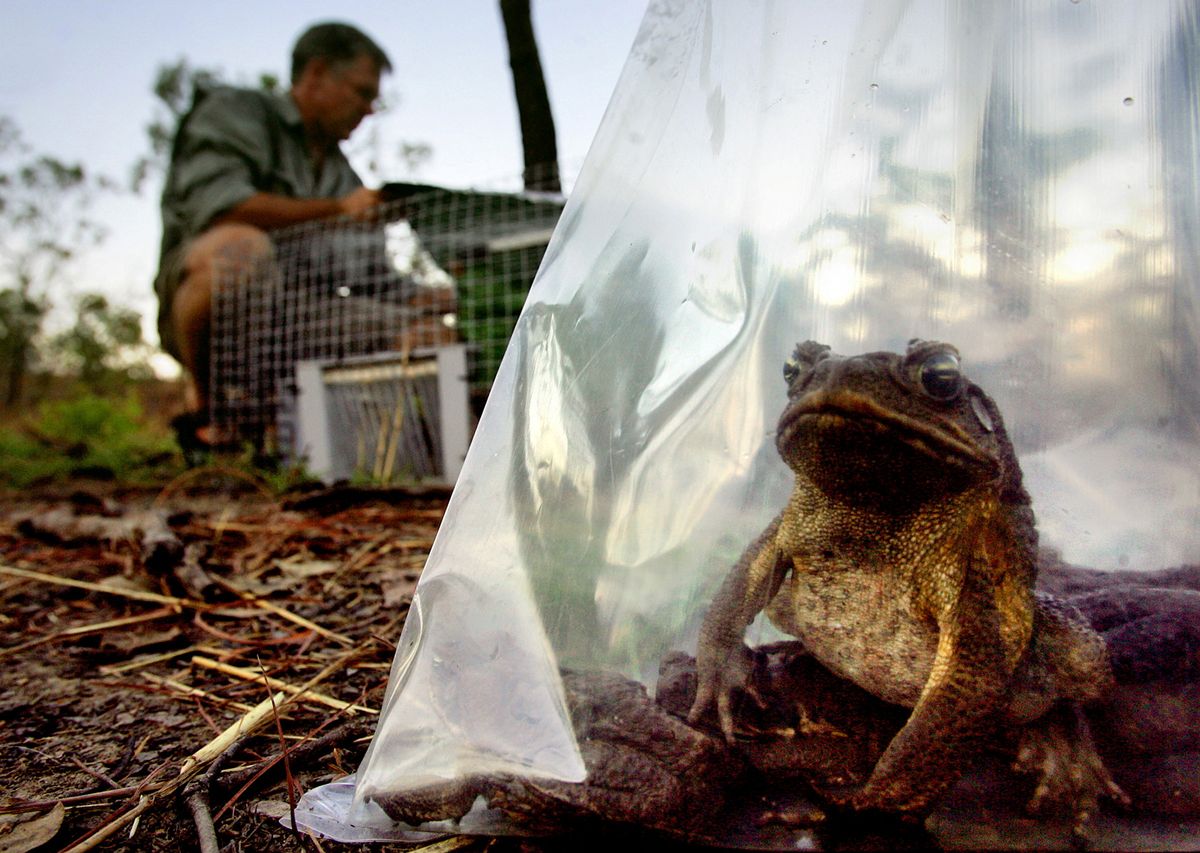Invasive species are costing the economy billions of dollars
On Monday, a new, sweeping report on the impact of invasive species was published.

A few minutes every morning is all you need.
Stay up to date on the world's Headlines and Human Stories. It's fun, it's factual, it's fluff-free.
The backstory: When a plant or animal species not native to a region or area finds itself there, it can either quickly die off, or it can start to multiply. These species often end up in new places because of human activity – things like global trade, travel and climate change. Sometimes, this new species ends up fitting in well with the existing ecosystem. But sometimes, it ends up damaging it and taking over. The ones that cause harm are referred to as “invasive nonnative species.”
While we deal with other environmental problems caused by humans, like climate change and pollution, the threat of invasive species often goes under the radar, but it’s a real issue. Examples of problematic invasive species include mosquitoes, which have been able to survive in new areas because of warmer climates and spread diseases like Zika and Malaria. Or, for instance, feral cats, which hunt and kill small reptiles, birds and mammals. And it’s hard to get rid of invasive species because they can often reproduce quickly, especially when it comes to insects and plants. The best way to deal with this threat is through prevention, like border biosecurity and import controls.
More recently: In 2019, the UN’s Intergovernmental Science-Policy Platform on Biodiversity and Ecosystem Services published a report that found that up to one million plant and animal species were at risk of extinction. In December 2022, the international community signed the Kunming-Montreal Global Biodiversity Framework, agreeing to cut down on the embedding of major invasive species by 50% by 2030. Unfortunately, in August, Hawaii experienced massive, deadly wildfires, which scientists say were fueled by flammable invasive grasses that had been brought over from Africa to feed livestock.
The development: On Monday, a new, sweeping report on the impact of invasive species was published by the same Platform on Biodiversity and Ecosystem Services, building on its original 2019 study. It looked at some pretty broad-ranging data, analyzing info from 1970 to 2019. According to the study, invasive species are causing more than US$423 billion in economic losses around the world every year. These losses are chalked up to how invasive species threaten human health, harm global food systems and damage the natural world.
Since 1970, these costs have more than quadrupled every decade, the report says. It also says that invasive foreign species have majorly contributed to 60% of recorded extinctions of both plants and animals. It’s estimated that over 37,000 alien species have been introduced by human activity, with 3,500 found to be harmful and invasive. That’s not to mention that researchers say all of these estimates are on the conservative side because it’s hard to get real numbers for all of the effects. As climate change develops with no end in sight, this problem is expected to get worse.
Key comments:
“We are seeing unprecedented increases in the numbers of alien species worldwide,” Helen Roy, an ecologist who helped lead the new study, said in an interview. “It’s about 200 new alien species every year. And, yes, with those kinds of numbers, we will also see the impacts increasing.”
“Invasive species are likely to be a primary driver of 85% of the next round of predicted vertebrate extinctions over the next 20 years,” Lyall Grieve, the conservation and biosecurity analyst for the Australian Invasive Species Council, said in a statement. “Our geographic isolation means we are home to species that occur nowhere else on earth, but this unique web of life is also very vulnerable to invaders like feral cats, fire ants or new fungal diseases like myrtle rust. The free ride for importers who create the risk of potentially devastating invasives entering Australia must end so that we can source increased and sustainable funding.”
"Invasive species are affecting not only nature but also people and causing terrible loss of life," said report co-chair Anibal Pauchard of Chile's Institute of Ecology and Biodiversity.




Comments ()